Key takeaways:
- Local business networking focuses on building authentic relationships, leading to valuable collaborations and community support.
- Collaboration enhances visibility and credibility, fostering a culture of innovation and resource-sharing among businesses.
- Effective networking emphasizes quality interactions, follow-up, and diversifying activities, which can lead to meaningful partnerships.
- Measuring success in networking involves setting clear goals, assessing the quality of connections, and seeking feedback to strengthen relationships.
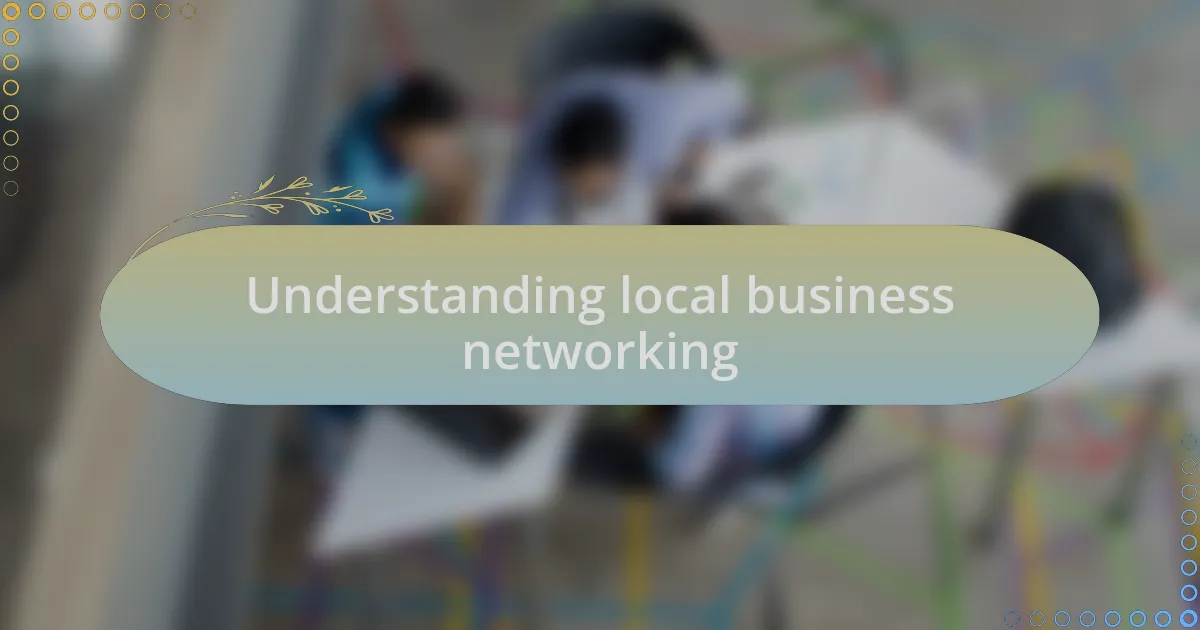
Understanding local business networking
Local business networking is more than just exchanging business cards; it’s about building genuine relationships. When I first attended a networking event, I was nervous, unsure if anyone would want to talk to me. But once I shared my passion for my work, the atmosphere shifted. People were drawn to conversations where authenticity thrived, and that’s when I realized how much personal connection matters.
Engaging in local business networking opens up a treasure trove of opportunities. I remember a time when a simple chat over coffee led to a partnership that benefited both my business and my neighbor’s restaurant. How many opportunities could you be missing out on by simply staying within your comfort zone? Networking allows for collaboration that can amplify your reach and impact within the community.
I’ve noticed that the true essence of local business networking lies in community support. It’s rewarding to participate in events where everyone roots for each other’s success. Every successful referral or collaboration brings a sense of fulfillment. Have you ever felt that rush of excitement when someone you connected with helps grow your business? That feeling is often what keeps me coming back to local networking events.
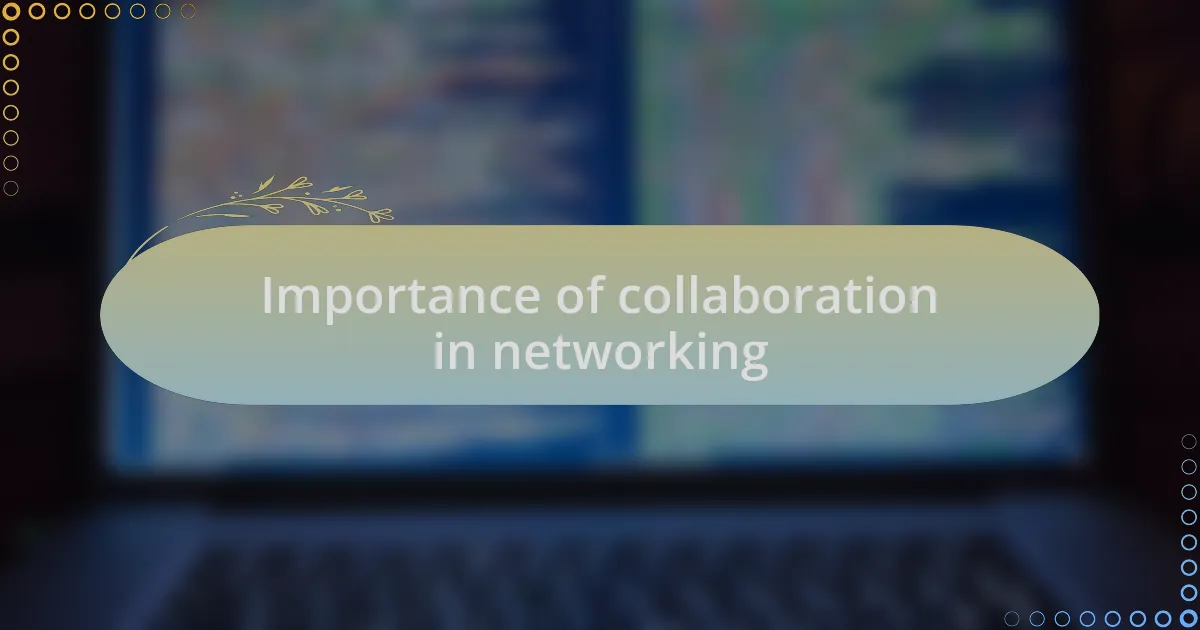
Importance of collaboration in networking
Collaboration is crucial in networking because it transforms isolated entities into powerful allies. When two businesses come together, they can combine strengths and mitigate weaknesses. I’ve seen firsthand how partnering with another local entrepreneur can lead to creative solutions that neither of us could have achieved alone. Have you ever thought about how a simple collaboration might solve a problem you’ve been struggling with?
The value of collaboration goes beyond immediate gains; it fosters a culture of support within the community. I recall joining forces with a nearby shop owner for a promotional event. Not only did we share resources, but we also attracted a crowd that enjoyed the unique blend of our offerings. That shared venture made both our businesses stand out, proving that collaboration can enhance visibility and credibility in local markets.
Moreover, collaborating allows for diverse perspectives, leading to innovative ideas. In one instance, during a brainstorming session with several local business owners, one of them proposed an idea that was initially outside my sphere of thinking. It turned into a dynamic initiative that redefined our collective marketing approach. When was the last time you considered how a fresh viewpoint could revolutionize your business strategy? Embracing collaboration in networking opens doors to possibilities you might not even have imagined.
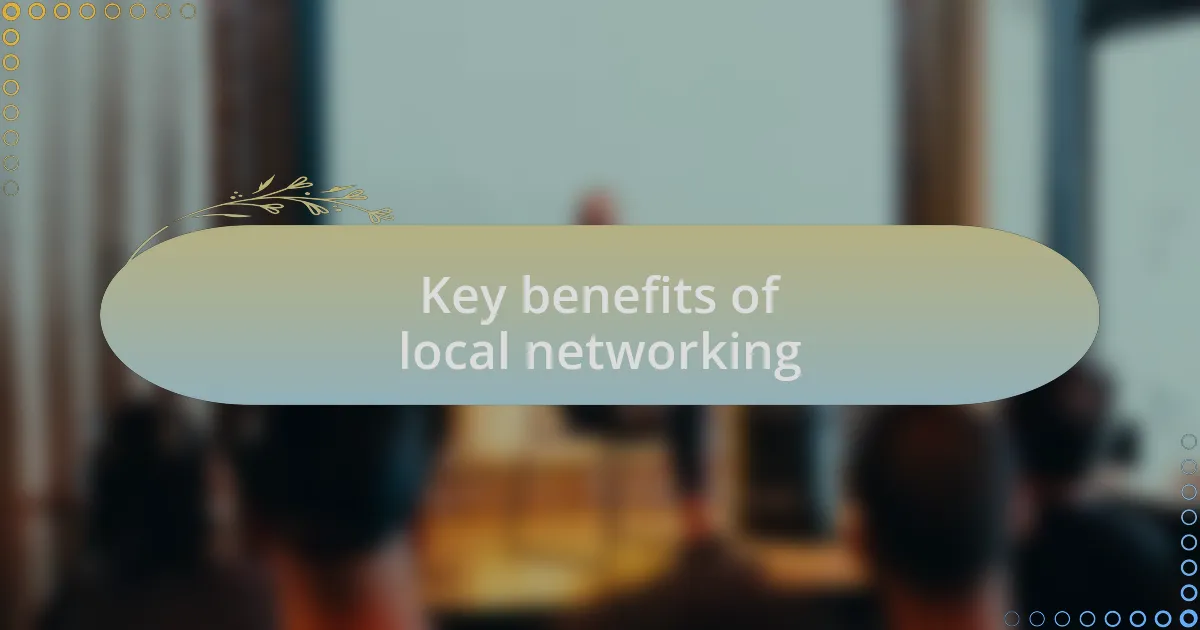
Key benefits of local networking
Building connections within your local network can undoubtedly open doors to new opportunities. For instance, during my own journey, I joined a local chamber of commerce. What struck me was how sharing a lunch table with fellow business owners led to unexpected referrals and collaborative projects. Have you ever realized how conversations over simple coffee can spark significant partnerships?
Another tremendous benefit is the trust factor that local networking brings. When I attended a neighborhood meet-up, I noticed how much more comfortable people felt doing business with someone they recognized from the community. This familiarity fosters long-term relationships, which often translate into loyal customers. Have you experienced that warm, supportive vibe that makes local transactions feel more personal?
Additionally, local networking enhances knowledge sharing, which can be immensely valuable. I remember when a local influencer conducted a workshop. It wasn’t just informative but revealed unique insights that helped me adapt my strategies. Aren’t there moments when the right piece of advice can shift the entire trajectory of your business? Capitalizing on these intimate gatherings can truly elevate not just your business but also the local economy as a whole.
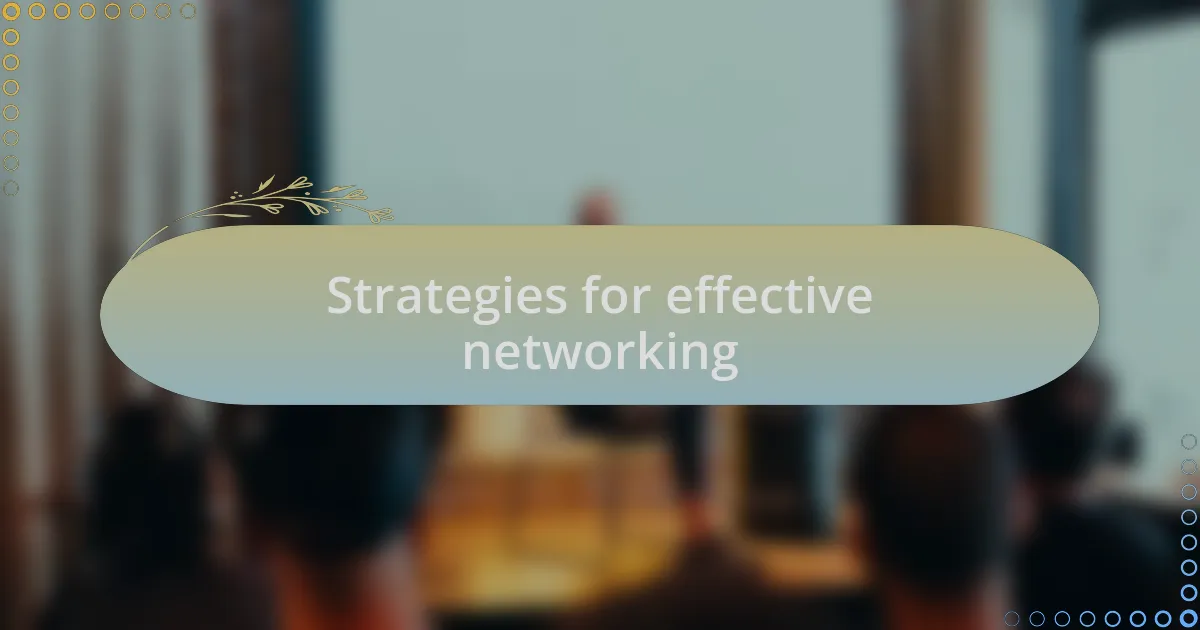
Strategies for effective networking
When it comes to effective networking, I’ve found that the quality of interactions matters far more than quantity. At a recent local event, I spent time focusing on just a few relationships rather than trying to meet everyone in the room. It was surprising how much deeper conversations became when I really invested time in understanding the other person’s business needs. Have you ever noticed how meaningful connections can lead to more than superficial exchanges?
I also believe that follow-up is a critical strategy that many overlook. After meeting someone, I make it a point to reach out within a few days, whether to share a relevant article or just to check in. This simple gesture has often turned into fruitful collaborations. Do you have a toolbox of follow-up techniques that you lean on to keep those initial sparks alive?
Lastly, diversifying your networking activities can be a game-changer. I once joined a local volunteer group not primarily for business, but the connections I made there were invaluable. Engaging in community service not only nurtures goodwill but also allows you to interact with potential clients in a relaxed setting. Isn’t it interesting how helping others often places you in the right circles?

My personal collaboration techniques
I’ve developed a technique I call “purposeful listening.” When conversing with someone, instead of just waiting for my turn to speak, I immerse myself in their words. For instance, during a recent meet-up, I truly listened to a fellow entrepreneur share their challenges. By reflecting back what I heard, I not only clarified their needs but also built a connection that led to a collaborative project. Has listening ever revealed a partnership opportunity that you hadn’t considered?
Another essential technique is creating a “collaboration checklist.” I keep a simple list of skills, resources, and needs that I can share with others. The other day, I bumped into a local artist at a coffee shop and, as we chatted, I pulled out my list to show how my marketing skills could support their upcoming exhibition. This visual approach sparked an idea for a joint promotional campaign. Have you found that having a tangible reference helps to solidify your proposals?
Finally, I prioritize setting clear intentions when collaborating. Before entering a partnership, I discuss mutual goals and define our roles. I remember a time when I launched a product with a friend without clarity, and it led to misunderstandings down the line. Reflecting on that experience, I now ask, “What does success look like for both of us?” By having those candid conversations upfront, you create a foundation for a successful collaboration. How do you ensure clarity, and has it made a difference in your partnerships?
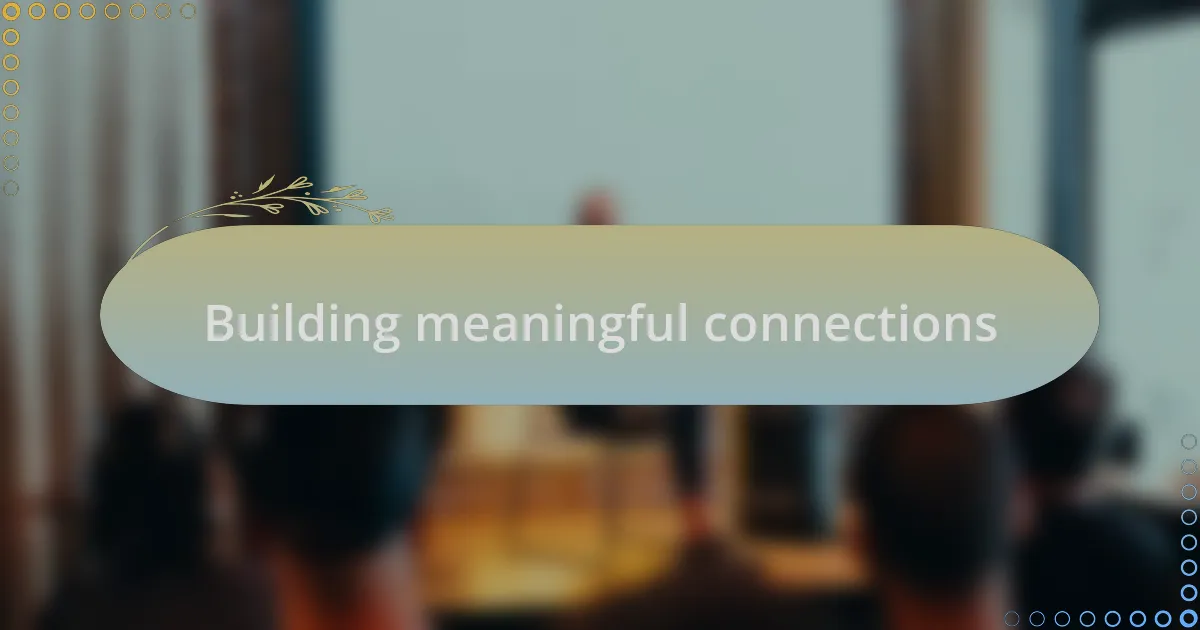
Building meaningful connections
Building meaningful connections starts with authenticity. I recall an event where I was genuinely myself, sharing not just my successes but also my setbacks. A fellow business owner resonated with my honesty, and that vulnerability opened the door to discussions that blossomed into a lasting friendship. Have you ever noticed how authenticity draws people in?
Another way I foster connections is through shared experiences. Recently, I participated in a community volunteer project that was unrelated to business. While working side by side, I exchanged stories with another local entrepreneur. This common ground not only enriched our conversation but also laid the groundwork for mutual support. How often do you step outside your usual networking box to create those shared moments?
Lastly, it’s essential to follow up on the connections I make. After a networking event, I always send a personalized message to those I met, reminding them of our conversation. Just last week, I reached out to someone I met months ago, referencing a project they mentioned, and it reignited our collaboration ideas. Doesn’t it feel rewarding to turn a brief encounter into an ongoing relationship?

Measuring success in networking efforts
Measuring the success of my networking efforts often starts with setting clear, achievable goals. For instance, after attending a networking dinner, I aimed to establish connections with at least three new local business owners. When I followed up and saw some of those connections transform into collaborative projects, I knew my networking strategy was on the right track. Have you set specific targets for your networking outings?
I also find value in tracking the quality of interactions rather than just the quantity. There was a time when I focused on exchanging business cards, only to realize that I hardly remembered those people. Shifting my focus to meaningful conversations has led to stronger relationships—and I often reflect on how many of those discussions turned into partnerships. How do you assess the depth of your connections?
Feedback plays a crucial role in evaluating my networking success. I often reach out to people I’ve connected with and ask for their thoughts on our interactions. One time, a mentor I met provided insights that altered my approach, making me realize the importance of not just networking but nurturing those relationships over time. Isn’t it amazing how an outside perspective can illuminate our own blind spots?